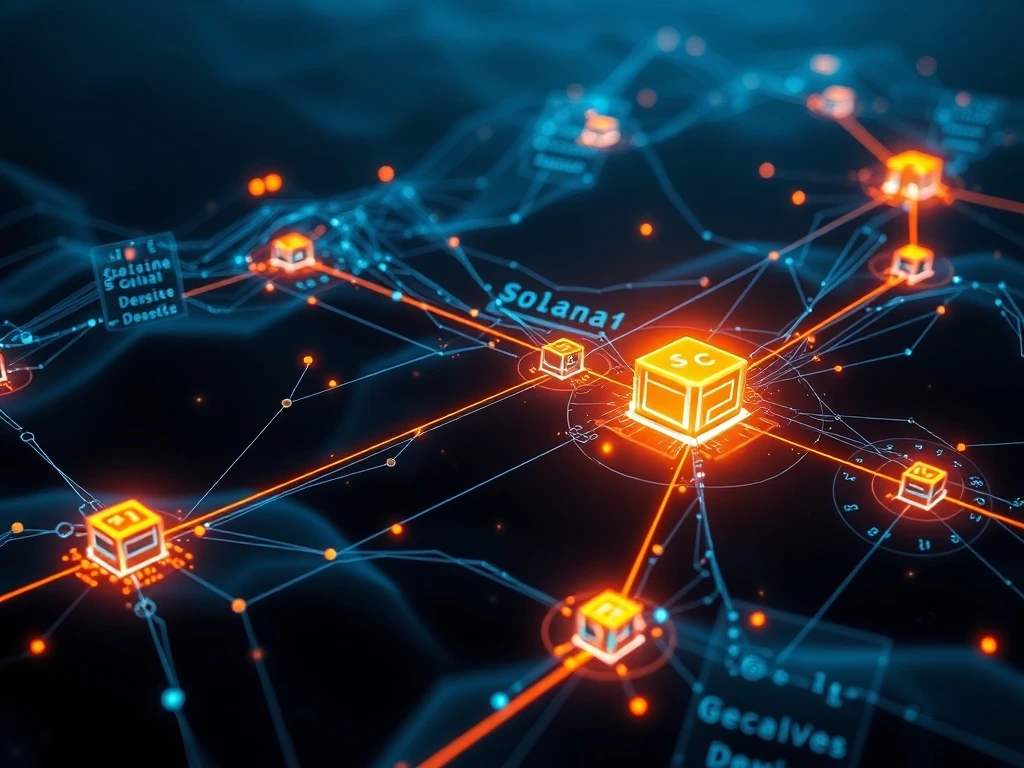Solana Firedancer: Unlocking Revolutionary 1M TPS Amidst Scalability Challenges

The crypto world is abuzz with incredible news: Solana’s next-generation validator client, Solana Firedancer, demonstrated a staggering 1 million transactions per second (TPS) in a recent demo. This milestone, showcased at Solana Breakpoint 2024, promises a future of unparalleled speed for the Solana blockchain. But what does this mean for real-world applications, and what hurdles remain before this potential is fully realized?
What is Solana Firedancer and Why Does it Matter?
Solana Firedancer is a new validator client developed by Jump Trading. Its purpose is to significantly enhance the Solana network’s processing capabilities. During a demo at Solana Breakpoint 2024, Firedancer showed it could achieve 1 million transactions per second (TPS). This level of throughput is critical for supporting high-demand applications and positions Solana as a leader in high-performance blockchain technology. It represents a significant step towards a more efficient and responsive decentralized internet.
The Hurdles Limiting Solana Scalability
Despite the impressive demo, Firedancer currently faces technical hurdles that prevent it from reaching its maximum speed on Solana’s mainnet. Douglas Colkitt, a founding contributor at Fogo, explains that Solana’s existing architecture limits Firedancer’s performance. The network’s block time remains around 400 milliseconds, primarily because Agave, Solana’s dominant validator client, still accounts for 90% of validators. This creates a bottleneck, akin to driving a high-performance car in city traffic; the system’s speed is capped by its slowest component. This challenge directly impacts overall Solana scalability.
Fogo Blockchain: A Testbed for Speed and Innovation
To navigate these constraints, developers are exploring alternative environments like Fogo, a Solana-compatible chain. Fogo is designed to test Firedancer’s capabilities without the limitations of Solana’s current setup. The Fogo blockchain intentionally discards some of Solana’s core assumptions, such as globally distributed validator sets, to prioritize speed over decentralization. This approach allows for focused experimentation on throughput. Fogo is also adopting a hybrid called Frankendancer, combining Agave and Firedancer. This transitional phase facilitates gradual adoption without network destabilization. Frankendancer now represents 10% of Solana validators, up from 7% in April. Fogo plans a full transition to Firedancer by the end of 2024, with a mainnet launch targeted for September.
The Core Debate: Speed vs. Blockchain Decentralization
The development of Fogo highlights a fundamental debate in blockchain infrastructure: the trade-off between scalability and decentralization. By concentrating validator nodes in key global hubs like Tokyo, London, and New York, Fogo reduces latency but sacrifices geographic diversity. Colkitt argues this trade-off is necessary for applications requiring millisecond-level responsiveness, such as real-time trading and decentralized physical infrastructure networks (DePIN). While Solana’s commitment to blockchain decentralization ensures security and censorship resistance, projects like Fogo demonstrate how performance-focused chains can push technical boundaries, reflecting a maturing industry where infrastructure is tailored to specific use cases.
Unlocking Peak TPS Performance for Real-World Applications
The pursuit of higher TPS performance is not just about raw numbers; it’s about enabling a new generation of decentralized applications. Platforms like Hyperliquid, which dominates 90% of decentralized perpetual trading, stand to gain significantly from Firedancer’s potential. These applications demand millisecond-level responsiveness, a capability currently hindered by network bottlenecks. Solana’s broader roadmap aims to address these challenges by 2027, with goals including millisecond-level control over transaction ordering in smart contracts. While traditional financial institutions remain cautious, often favoring Ethereum-compatible ecosystems, the experiments with Firedancer and Fogo represent a critical test for the future of high-throughput blockchain.
In conclusion, Solana Firedancer represents a significant leap forward in blockchain technology, demonstrating impressive TPS performance. However, achieving its full potential requires navigating complex technical hurdles and making strategic choices regarding blockchain decentralization. The innovative approach of the Fogo blockchain, with its focus on speed, offers a valuable testbed for future infrastructure. This ongoing evolution highlights a dynamic industry moving towards specialized solutions, ultimately shaping the landscape of decentralized finance and beyond.
Frequently Asked Questions (FAQs)
1. What is Solana Firedancer?
Solana Firedancer is a new, high-performance validator client developed by Jump Trading for the Solana blockchain. It aims to significantly increase the network’s transaction processing speed and efficiency.
2. Why can’t Firedancer achieve 1M TPS on Solana’s mainnet yet?
While Firedancer demonstrated 1 million TPS in a demo, its full potential is limited by Solana’s current architecture, particularly the dominant use of the Agave validator client (90% of validators) and the resulting 400-millisecond block time, which creates a bottleneck.
3. What is Fogo, and how does it relate to Solana?
Fogo is a Solana-compatible blockchain designed as an alternative environment to test Firedancer’s capabilities without the constraints of Solana’s mainnet. It prioritizes speed by making different design choices, such as concentrating validator nodes, and serves as a testbed for high-throughput applications.
4. What is the “scalability vs. decentralization” trade-off in blockchain?
This trade-off refers to the challenge of designing a blockchain that can handle a high volume of transactions (scalability) while maintaining a widely distributed network of validators (decentralization). Often, optimizing for one can come at the expense of the other, as seen with Fogo’s approach to prioritize speed.
5. What is Frankendancer?
Frankendancer is a hybrid approach combining elements of both Agave and Firedancer validator clients. It’s a transitional phase adopted by Fogo to allow for gradual integration of Firedancer’s capabilities into the Solana ecosystem without destabilizing the network.
6. When is Firedancer expected to fully launch on Solana’s mainnet?
Fogo plans to transition fully to Firedancer by the end of 2024, with a mainnet launch targeted for September of that year. However, this timeline is acknowledged as a “very rough guess” by Fogo’s founding contributor, Douglas Colkitt.









